- Home
- Prelims
- Mains
- Current Affairs
- Study Materials
- Test Series
Hit List Questions 27 - PPP 100 PRELIMS 2024 - 45
Questions & Explanations:
|
1. |
Consider the following statements about Madam Bhikaji Cama: 1. Madam Cama unfurled the National Flag at the International Socialist Conference in Paris in the year 1907. 2. Madam Cama served as private secretary to Dadabhai Naoroji. 3. Madam Cama was born to Parsi. Which of the statement(s) given above is/are correct? (a) 1, 2 and 3 (b) 2 and 3 only (c) 1 and 2 only (d) 3 only |
|
|||
|
2. |
Tej and Hamoon that were seen in news refer to (a) Cloned animals (b) High yielding Rice varieties (c) Cyclones (d) Comets |
|
|||
|
3. |
Which of the following Wavell Plan did not concede?. 1. Foreign Affairs in Indian Hands. 2. Defence in Indian Hands 3. Expansion of the Council 4. Dominion Status (a) Only 3 & 4 (b) Only 2 and 4 (c) Only 1 and 2 (d) 1, 2, 3 and 4 |
|
|||
|
4. |
Who among the following prominently fought for and got widow remarriage legalized ? 1. Raja Ram Mohan Roy 2. Ishwar Chandra Vidyasagar 3. M.G. Ranade (a) 2 only (b) 1, 2 & 3 (c) 1 & 2 only (d) 2 & 3 only
|
|
|||
|
5. |
When Congress leaders condemned the Montagu- Chelmsford Report, many moderates left the party to form the (a) Swarajya Party (b) Indian Freedom Party (c) Independence Federation of India (d) Indian Liberal Federation
|
|
|||
|
6. |
Consider the following statements regarding Cripps Proposals 1942: 1. India would be a dominion associated with the United Kingdom. 2. Indians were given promise of liberty to frame their own constitution. 3. Muslim league supported the proposals of Cripps. Which of the above statements is/are correct? (a) 1 only (b) 1 and 2 only (c) 1 and 3 only (d) 1, 2 and 3
|
|
|||
|
7. |
During the World War-I, who among the following established the first provisional Government of India at Kabul in Afghanistan in 1915. (a) Rash Behari Bose (b) Raja Mahendra Pratap (c) Rash Behari Ghosh (d) Sohan Singh Bhakna
|
|
|||
|
8. |
Leo Tolstoy''s famous “A Letter to a Hindoo” (1908), was addressed to (a) Tarak Nath Das (b) Mahatma Gandhi (c) Bal Gangadhar Tilak (d) V.D.Savarkar
|
|
|||
|
9. |
At a time when empires in Europe were crumbling before the might of Napoleon, one of the following Governors-General kept the British flag flying high in India. (a) Lord Dalhousie (b) Lord Cornwallis (c) Lord Wellesley (d) Lord Hastings
|
|
|||
|
10. |
With reference to the period of Indian freedom struggle, which of the following was/were recommended by the ‘Nehru Report’? 1. Complete Independence of India. 2. Joint electorates for reservation of seats for minorities. 3. Provision of fundamental rights for the people of India in the Constitution. Select the correct answer using the codes given below? (a) 1 only (b) 2 and 3 (c) 1 and 3 (d) 1, 2 and 3
|
|
|||
|
11. |
Consider the following proposals mentioned in the August Offer, 1940. 1. The expansion of the Governor-General''s Executive Council to include more Indians was promised. 2. Establishment of an Advisory War Council was proposed. 3. The weight to minority opinion was ignored but the untouchables were weighed within the proposals. 4. Indian''s right to frame their own Constitution after the Second World War was recognised. Which of the statements given above is/are incorrect?. (a) 3 only (b) 1, 3 and 4 only (c) 2 and 3 only (d) 1, 2 and 4 o |
|
|||
|
12. |
Which of the following pairs is/are not correctly matched? 1. Social Reform Association – Raja Ram Mohan Roy 2. Social Service - N.M. Joshi League 3. Seva Samiti - H. N. Kunzru Which of these is/are correct?. (a) 1 and 3 only (b) 2 and 3 only (c) 1 and 2 only (d) 1, 2, 3 |
|
|||
|
13. |
Consider the following statements: 1. Arya Samaj was founded in 1835. 2. Lala Lajpat Rai opposed the appeal of Arya Samaj to the authority of Vedas in support of its social reform programme. 3. Under Keshab Chandra Sen, the Brahmo Samaj campaigned for women’s education 4. Vinoba Bhave founded the Sarvodaya Samaj to work among refugees Which of these statements are correct? (a) 1 and 2 (b) 2 and 3 (c) 2 and 4 (d) 3 and 4
|
|
|||
|
14. |
After the Santhal Uprising subsided, what was/were the measure/measures taken by the colonial government? 1. The territories called ‘Santhal Paraganas’ were created. 2. It became illegal for a Santhal to transfer land to a non-Santhal. Select the correct answer using the code given below: (a) 1 only (b) 2 only (c) Both 1 and 2 (d) Neither 1 nor 2
|
|
|||
|
15. |
The Sarabandi Campaign of 1922 was led by (a) Chittaranjan Das (b) Sardar Vallabhbhai Patel (c) Rajendra Prasad (d) Lala Lajpat Rai
|
|
|||
|
16. |
Consider the following statements about the different meanings of ‘Swaraj’ as articulated by Mahatma Gandhi : 1. Swaraj is intimately linked with Ahimsa (non-violence) and Satyagraha (adherence to truth). 2. Swaraj has two senses-one political and one beyond the realm of politics. 3. Swaraj is something that requires time and patience to acquire. 4. With determination, Swaraj could be obtained easily and quickly. Which of the statements given above is/are correct? (a) Only 1 and 4 (b) Only 2 and 4 (c) 1, 2 and 3 (d) 1, 2, 3 and 4
|
|
|||
|
17. |
Which of the statements given below is/are correct w.r.t. ''Lord Lytton''? (a) The title of “Rai Bahadur" and "Khan Bahadur" began to conferred to Indians during his period. (b) The first Delhi Darbar was organized during his period. (c) Both (a) and (b) (d) Neither (a) nor (b)
|
|
|||
|
18. |
W.r.t. Dawn Society, consider the following statements: 1. It was established to protest against the Report of the Indian Universities Commission. 2. Satish Chandra Mukherjee founded it. Which of these statements is/are correct? (a) 1 only (b) 2 only (c) Both 1 and 2 (d) Neither 1 nor 2
|
|
|||
|
19. |
Of the four events mentioned below, which one was chronologically the last to take place? (a) Simla conference (b) Election of July 1946 (c) The offer of the Cabinet Mission Plan · (d) Muslim League joining the Interim Government |
|
|||
|
20. |
“LBR depletion” seen in news refer to the context of (a) Cosmic dust (b) Cancer diagnosis (c) Quantum Computers (d) Electric Vehicles
|
|
|||
|
21. |
Under whose presidentship did the Indian National Congress meet in August 1918 at Bombay to consider the proposals of Montague Chelmsford? (a) Hasan Imam (b) Badruddin Tayabji (c) Tilak (d) Annie Besant
|
|
|||
|
22. |
In 1889, a committee was set up in Britain to gain support for the Congress, who amongst the following was its President? (a) Sir W. Wadderburn (b) Mr. Digby (c) Dadabhai Naoroji (d) W.C. Banerjee
|
|
|||
|
23. |
Who launched the Congress Democratic Party in 1920?. (a) Bal Gangadhar Tilak (b) Subhas Chandra Bose (c) Annie Besant (d) S.A.Dange
|
|
|||
|
24. |
What were the major reasons that gave a great setback to The Brahmo Samaj movement?. 1. Marriage of the eldest daughter of Keshab Chandra Sen. 2. Founding of Indian Reform Association. Select the correct answer from the codes given below:- (a) Only 1 (b) 1 & 2 (c) Only 2 (d) Neither 1 Nor 2
|
|
|||
|
25. |
1. They were the associates of Swami Dayanand Saraswati. 2. They helped found Hindu College at Calcutta. Which of the above statement(s) is/are correct w.r.t. “David Hare and Alexander Duff”?. (a) 1 only (b) 2 only (c) Both 1 and 2 (d) Neither 1 nor 2
|
|
|||
|
|
EXPLANATIONS |
|
|||
|
1. |
Bhikaji Cama She led the revolutionary movement from America and Europe for India’s freedom. She struggled with her full strength for Indian freedom and worked for it at least 30 years residing in Paris. In 1936 she returned to Mumbai at the age of 75 and the same year, she died. She was popularly known as ‘’Mother of Indian Revolution’’. Madam Bhikaji Cama was born on 24 September, 1861. Her parents were Parsi. Sorabji Patel was her father. She was married to Rustan K.R Cama. He was an advocate and social activist. Madam Cama worked as a personal secretary of Dada Bhai Naoroji, the great leader of Indian National Movement. After some period she associated herself with the Freedom Movement when she came into the contact of Europian scholars and students. She fi rst unfurled the National Flag at International Socialist Conference on 22 th August, 1907 in Germany’s Stuttgart. |
B |
|||
|
2. |
C |
||||
|
3. |
Wavell Plan Proposals In May 1945 Wavell visited London and discussed his ideas with the British Government. These London talks resulted in the formulation of a definite plan of action which was officially made public simultaneously on 14 June 1945 by L.S. Amery, the Secretary of State for India. The Wavell Plan proposed the following: · The Viceroy’s Executive Council was to have all Indian members except the Viceroy himself and the Commander-in-Chief. · The council was to have a ‘balanced representation’ of all Indians including ‘caste-Hindus’, Muslims, Depressed Classes, Sikhs, etc. Muslims were given 6 out of 14 members which accounted for more than their share of the population (25%). · The Viceroy/Governor-General would still have the power of veto but its use would be minimal. · The foreign affairs portfolio would be transferred from the Governor-General to an Indian member. The defence would be handled by a British general until the full transfer of power was made. · A conference would be convened by the Viceroy to get a list of all the members recommended to the Council from all parties concerned. In case a joint list was not agreed upon, separate lists would be taken from the parties. This was to be the Shimla Conference. · If this plan worked, similar councils would be formed in all provinces comprising of local leaders. · Lord Wavell invited 21 political leaders including Mahatma Gandhi and M A Jinnah to Shimla, the summer capital of British India to discuss the Wavell Plan on June 25th, 1945. · The conference was a failure because the League and the Congress could not settle their differences. · Jinnah insisted that only League members could be the Muslim representatives in the Council, and opposed to the Congress nominating Muslim members. This was because Jinnah wanted the League to be the sole representative of Muslims in India. Congress would never agree to this demand. · In the Wavell Plan, there were 6 Muslim representatives out of 14 members, which was more than the Muslim share of the population. Despite this, the League wanted the power of veto to any constitutional proposal which it believed was not in its interest. Congress opposed this unreasonable demand also. · Jinnah refused to give the names to the council unless the government acknowledged that only the Muslim League was the exclusive representative of Indian Muslims. · The Wavell Plan, thus, was dissolved with the failure of the conference. And with it the last chance to avoid partition. · After this, the war ended and a new Labour government was elected in Britain. This new government was intent on giving independence to India without much delay and sent the Cabinet Mission with that purpose. The failure of the Wavell Plan and the Shimla Conference was a watershed moment for the Indian Independence struggle. All steps taken to prevent partition had been met with failure, meaning that it was inevitable. |
B |
|||
|
4. |
The Hindu Widows’ Remarriage Act of 1856 was enacted in response to the campaign of Pandit Ishwar Chandra Vidyasagar. The act provided legal safeguards against loss of certain forms of inheritance for a remarrying Hindu widow. |
A |
|||
|
5. |
When Congress leaders condemned the Montagu- Chelmsford Report (July 1918), many moderates led by Surendra Nath Banerjee left the party to form Indian liberal federation in 1919. |
D |
|||
|
6. |
Proposals of the Cripps Mission Based on the draft declaration prepared by the All India Committee, chaired by Attlee, Stafford Cripps came to India and proposed the following constitutional reforms:
Indian Response to the Cripps Mission and its Failure The British had only undertaken this exercise to show the world that they cared about Indian sentiments rather than to do anything concrete. The Cripps Mission’s proposals fell short of appeasing Indian nationalists and ended up serving only as a US and Chinese propaganda tool. Various parties and organisations objected to the proposals on various grounds:
Significance of Cripps Mission The Cripps Mission was a critical turning point in India''s struggle for independence. While it aimed to find a middle ground for India''s future governance and cooperation during the war, it fell short of satisfying the aspirations of Indian leaders.
|
B |
|||
|
7. |
During the World War-I, Raja Mahendra Pratap established the fi rst provisional Government of India at Kabul in Afghanistan in 1915. In this Government Raja himself became President, and his associate Maulavi Barkatullah worked as Prime Minister. Germany and Russia gave recognition to this Government.
|
B |
|||
|
8. |
A |
||||
|
9. |
In 1797, Lord Wellesley arrived in India during a very difficult time for the British. Other European powers were joining forces to fight against France, and Napoleon had taken control of Egypt and Syria. He was planning to invade India. Lord Wellesley used the subsidiary alliance to help the British maintain power and protect themselves from Napoleon. |
C |
|||
|
10. |
The Nehru report (1928) recommended for the Dominion status of India in place of Complete Independence. It did not provide for separate electorates for any community or weightage for minorities. As regards the communal problem, the report recommended joint electorates with reservation of seats for minorities. The report also defi ned the provision of Fundamental Rights including the right to give a speech, organize meetings and make Organization. |
B |
|||
|
11. |
The Congress was prepared to lend support to Britain against Hitler (Germany) on the condition that India would be declared an independent nation. When the war situation in Europe reached a deadlock the Viceroy, Lord Linlithgow made a new offer to the Indians, known as the August offer. (b) The proposals of the August offer were : (i.) After the war a representative Indian body would be set up frame the Constitution for India. (ii.) The expansion of the Viceroy’s executive council was no longer to be postponed. (iii.) An Advisory Council would be set up. It would consist of representatives of British India and the Indian States and would meet at regular intervals. (iv.) The minorities were assured that the Government would not transfer power “to any system of Government whose authority is directly by large and powerful elements in Indian national life”. (c) The offer failed to satisfy the congress leaders. There was no time limit within which the Constitution – making body was to be set up. On the issue of the expansion of the Executive Council also no agreement could be reached. The Congress leaders had the impressions that the government did not really propose to part with power. The Muslim League welcomed that part of the offer which contained as assurance to the minorities. But its overall reaction was that the partition of India was the only solution of the most difficult problem of India’s future. |
A |
|||
|
12. |
Social Reform Association was founded by Keshav Chandra Sen. ‘Servants of India Society’, Social Service League’ and Seva Samiti were founded in 1905, 1909 and 1914 respectively. |
B |
|||
|
13. |
Arya Samaj was founded on April 7, 1875, at Bombay by Dayanand Saraswati. Thus statement 1 is incorrect. Lala Lajpat Rai was one of the members of Arya Samaj and he did not oppose the appeal of Arya Samaj to the authority of Vedas in support of its social reform programme. Thus, statement 2nd is also incorrect. Brahmo Samaj launched the movement for the education of women in the society under Keshav Chandra Sen. Vinoba Bhave founded the Sarvodaya Samaj to raise the living standard of the Indians and to promote the principles of Mahatma Gandhi and work among refugees. Thus, statement 3 and 4 are correct. |
D |
|||
|
14. |
In 1855-56 AD, the Santhal Rebellion was a major uprising of the tribal people in Bihar and Odisha. After it was put down, the British Government agreed to the demand for a Santhal Paragana district. The Santhal Pargana Tenancy Act was then created which stopped Santhal land from being given to people who weren’t Santhal. |
C |
|||
|
15. |
The Sarabandi (no tax) campaign of 1922 was led by Sardar Vallabhbhai Patel. In this campaign, the peasants decided not to pay the taxes. Sardar Vallabhbhai Patel was an Indian lawyer, political activist, the first Deputy Prime Minister of India and a leader of the Indian National Congress. |
B |
|||
|
16. |
Swaraj movement was initiated by Mahatma Gandhi which focuses on selfrule or self-governance and is intimately linked with Ahimsa (non-violence) and Satyagraha (adherence to truth), moreover it referred to Gandhi’s concept Indian independence from British rule. The movement had two meanings, political and non-political. It was political in the sense that it opposed being ruled by foreigners, and non-political in the sense that every person has right to be ruled by himself or herself. Swaraj is a virtue which need time and patience to achieve and cannot be obtained easily and quickly |
C |
|||
|
17. |
Lord Lytton, who remained the Viceroy of India from 1876-1880 used to write poems with the Pen name of Owen Meredith. During his tenure, a Royal Titles Act conferring on the queen Victoria the title of the Empress of India was passed and a magnificent Delhi Darbar was organized in 1877 in which queen Victoria was adorned with title Qaiser-i-Hind. Aligarh College was founded in 1877 and the Vernacular Press act, Arms act were passed in 1878. The age for eligibility in civil services was brought down from 21 to 18 years. The second Anglo-Afghan war also fought during his tenure which proved to be very expensive. Royal Titles Act 1876 The Royal Titles Act of 1876 was one of Prime Minister Disraeli’s famous imperialistic measures. The act was passed with the understanding that the British imperial title should be used only in India. Thus, the Queen began to use it in her signature in 1878 and in 1893 it appeared on the British coins. The title empress of India was officially translated as Kaisar-i-Hind, was decorated on her in 1877 Delhi Durbar. Delhi Darbar 1877 A few months after his swearing in as India’s Viceroy, a Grand Darbar was organized at Delhi on January 1, 1877, in which Queen Victoria was proclaimed empress of India. Queen Victoria was proclaimed with title “Kaisar-i-Hind” at this Darbar. When the princes of Indian princely states were flocking to participate in this gorgeous scene of Delhi Darbar, the shadow of famine was darkening over southern India. Great Famine of 1876 The monsoons of 1876 had failed to bring their due supply of rain, and the season of 1877 was little better. This long-continued drought stretched from the Deccan to Cape Comorin, and subsequently invaded northern India, causing a famine more wide-spread than any previously known in Indian history. The Poet Viceroy Lord Lytton was so uncompromising in implanting the British trading policies that was called directly responsible for the death of 10 million people in the Famine of 1876 -77 by some historians. The government is known to have spent 11 million sterling, but actually the lack of supply and efforts from the government caused the loss of life from starvation and a train of diseases that followed, taking the toll to a lamentable number. Vernacular Press Act 1878 The latter half of the 19th century saw a remarkable growth in the Vernacular Press of the country and newspapers played a role of catalyst in the new socio-political consciousness. Earlier, the newspapers were being published in Calcutta, Madras, Bombay, Allahabad only but later the newspapers started getting published from smaller places also. Since, most of the newspapers published from smaller places, they all were in vernacular languages. In 1878, when this act was passed, the there were 20 English Newspapers while 200. These vernacular newspapers made the people aware of the political affairs and now the people slowly started asking questions for their rights. So, in the best interest of the Government, Lord Lytton passed the Vernacular Press Act in 1878. By this act, the magistrates of the districts were empowered, without the prior permission of the Government, to call upon a printer and publisher of any kind to enter into a Bond, undertaking not to publish anything which might “rouse” feelings of disaffection against the government.
Thus the Vernacular Press Act of 1878 gagged the press and result was some proceedings against some vernacular press people. There was now a popular protest against this act. The act was later repealed by Lord Ripon, who followed Lord Lytton. Second Anglo Afghan War 1878-80 In the winter of 1878, the affairs of Afghanistan again forced themselves into notice. The First Anglo Afghan war had ended in 1842, in a humiliation for the British and this failure kept haunting them for many years. The successive governments in Britain remain calm, but when Lord Disraeli became PM, he sent Lord Lytton to India to increase the influence in Afghanistan. On this side, under Akbar Khan, the son of Dost Mohammed, Afghanistan once again became independent and Dost Mohammad Khan came back to power in 1843. Akbar Khan died in 1845. Treaty of Peshawar In 1855 Treaty of Peshawar between Dost Mohammad and British reopened the diplomatic relations. After a series of incidents, Russia established a fixed boundary between Afghanistan and its territories in 1873. But within a period of 5 years the rivalry turned back. This was because of an uninvited diplomatic mission sent by the Russians to Kabul. The ruler Sher Ali Khan, son of Dost Mohammad Khan wanted to stop them, but failed. The British too wanted to send a mission, but Sher Ali refused. A diplomatic mission was ordered by Lord Lytton, the viceroy of British India, and the Mission was turned back. This triggered the Second Anglo Afghan War. Treaty of Gandamak In the second Anglo Afghan war, much of Afghanistan was occupied by British. Sher Ali was defeated and he fled towards Turkistan. Sher Ali’s Son, Mohammad Yaqub Khan signed a treaty of Gandamak in May, 1879 to prevent British Invasion in rest of the country. However, he paid the price by relinquishing the Control of Afghan Foreign Relations to British. British Control was thus extended to much of the country. He also agreed to receive a British Resident at Kabul. The treaty of Gandamak was signed in May, 1879, but in the same year in September, the British Resident Major Cavagnari was murdered. This again triggered the war and Kabul was occupied. Yakub Khan surrendered and he was sent to Dehradun as a Prisoner. Attempt to Murder and Resignation of Lord Lytton At this crisis of affairs, there was a general election in England, which resulted in the defeat of the Conservative Ministry of Lord Disraeli. Lord Lytton also resigned simultaneously. Prior to that in 1879 an attempt was made to assassinate him, but he happily escaped uninjured. After his resignation, Lord Ripon was sent to India. Mohammadan Anglo-Oriental College) was founded by Sir Syed Ahmed Khan, the leader of Muslim renaissance in Indian subcontinent, in 1875 at Aligarh during the tenure of Lord Lytton. It later became Aligarh Muslim University.
|
C |
|||
|
18. |
C |
||||
|
19. |
Simla Conference: June 1945 Election of July 1946 The offer of the Cabinet Mission Plan : May 1946 Muslim league joining the interim government : After the formation of Interim government in 2 sept 1946. |
D |
|||
|
20. |
B |
||||
|
21. |
|
A |
|||
|
22. |
‘British Committee of India’ was established in London in July, 1889 with the purpose to gain support for Indian National Congress under the presidency of William Digby. It was a committee of Indian National Congress. This committee released weekly magazine “India” to convey Indian issues to British. |
B |
|||
|
23. |
In1907, he formed a radicalist faction inside the Congress and started the Home-Rule League along with an Irish lady, Ms. Annie Besant. Though a conservatist towards social reforms, he was a pioneer to foresee that mass support was needed to make his motherland free from imperialistic clutches. In order to bring the Maratha people together on the same platform, he started the celebration of Shivaji Festival. In 1908 he aimed at militant mass movement and expressed his views on Swarajya at the Calcutta session of I.N.C. In the same year he was arrested for conspiring against the Queen when he raised his voice against the partition of Bengal. He was jailed for 6 years. When the ''Indian Reforms Act'' was introduced in 1919, he rejected it describing it as inadequate, disappointing and unsatisfactory. He launched the Congress Democratic Party in 1920 but before he could take up the action, he suddenly died on 1st August, leaving behind millions of mourners.
|
A |
|||
|
24. |
There was a crisis developed in Brahmo Samaj due to the marriage of the eldest daughter of Keshab Chandra Sen with the minor rurler of Cooch Behar. Neither of the pairs had attained the minimum marriageable age as per the Brahmo Samaj and the Native Marriage Act of 1872. In addition to this , the marriage was performed by the Brahmin priests according to Hindu rites in the presence of the images of Hindu deities. Due to this controversy there sustained a split in the Brahmo Movement. He founded the Indian Reform Association in 1870.
|
B |
|||
|
25. |
In collaboration with David Hare and Alexander Duff, Raja Rammohan Roy established Hindu College at Calcutta in 1817.
|
B |









 Latest News
Latest News
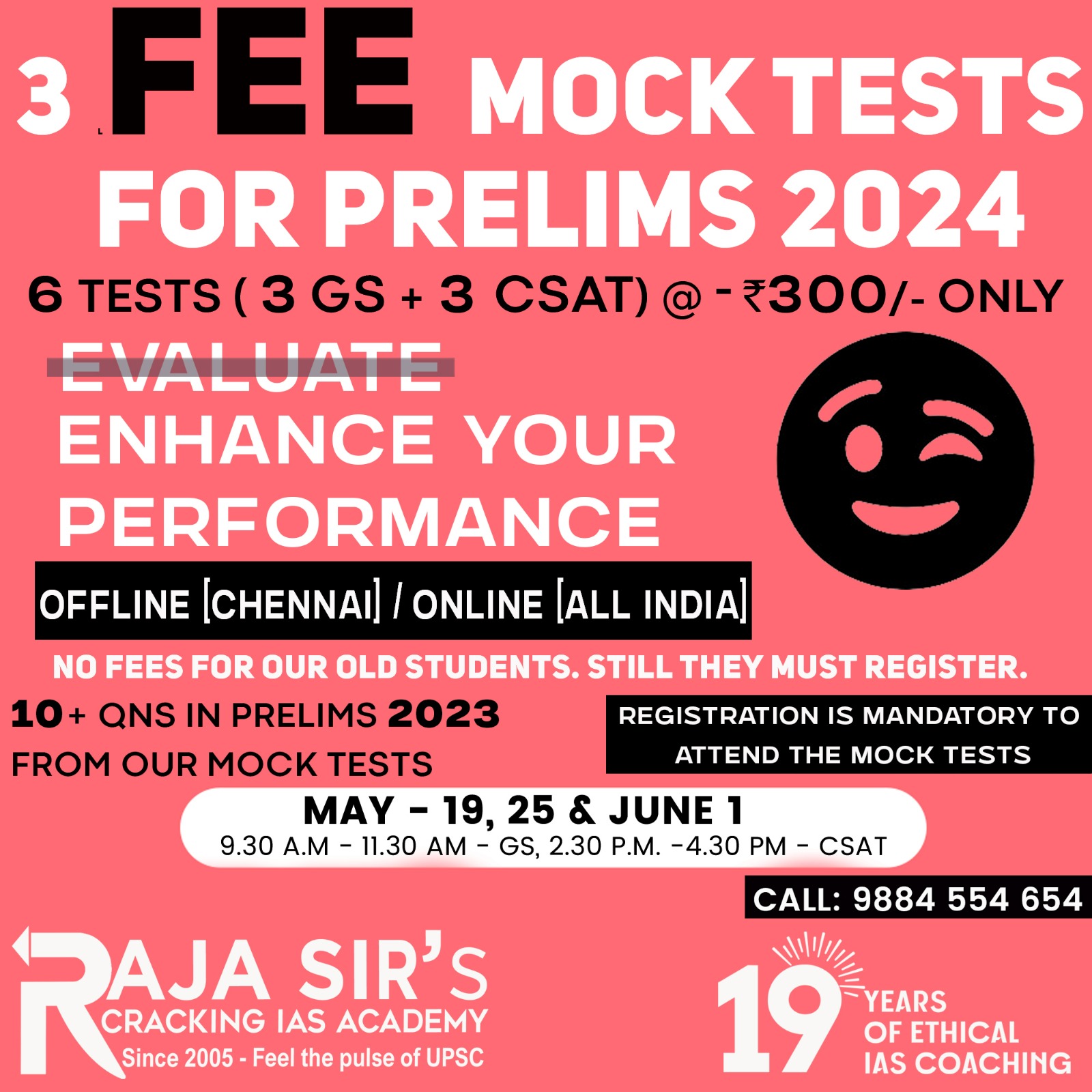
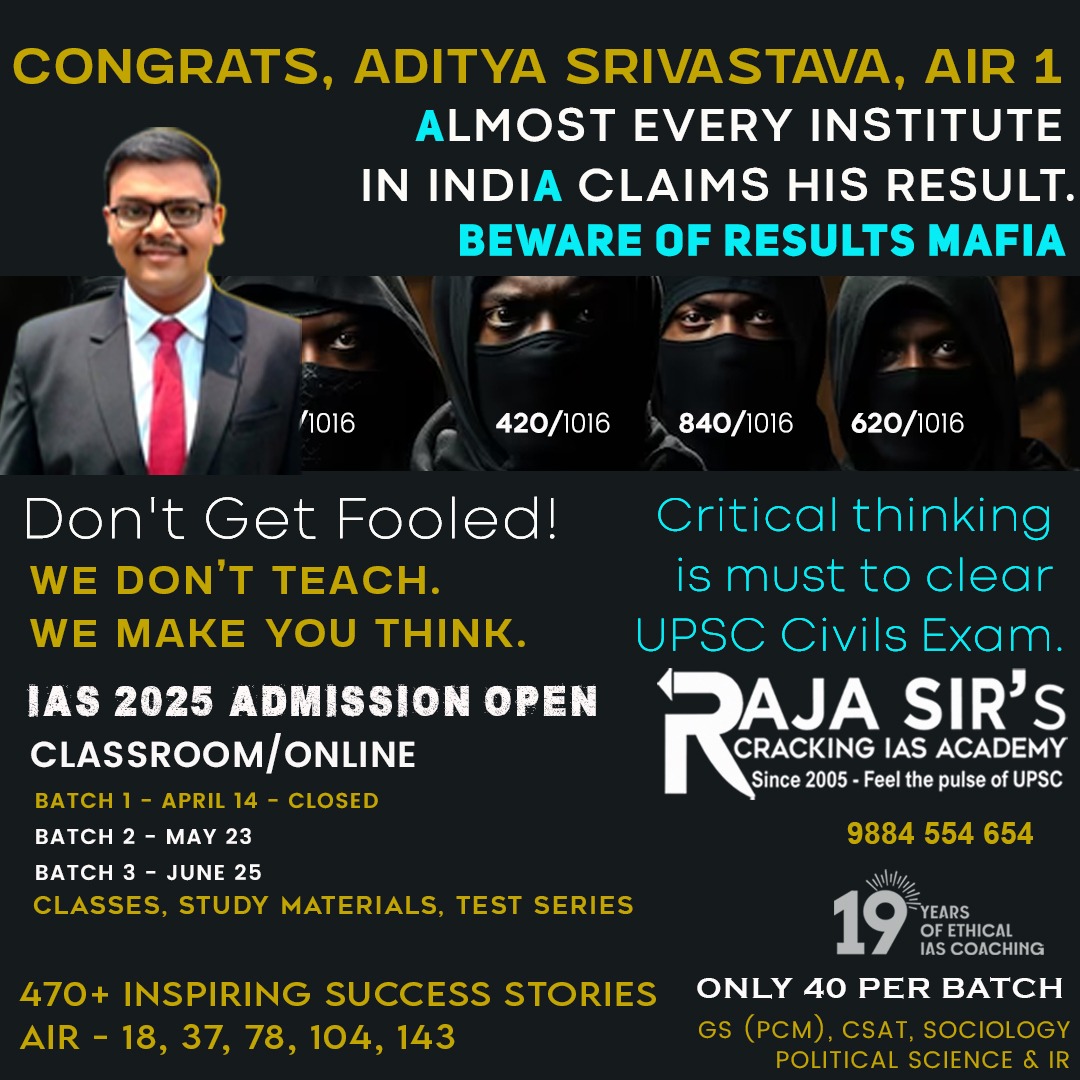
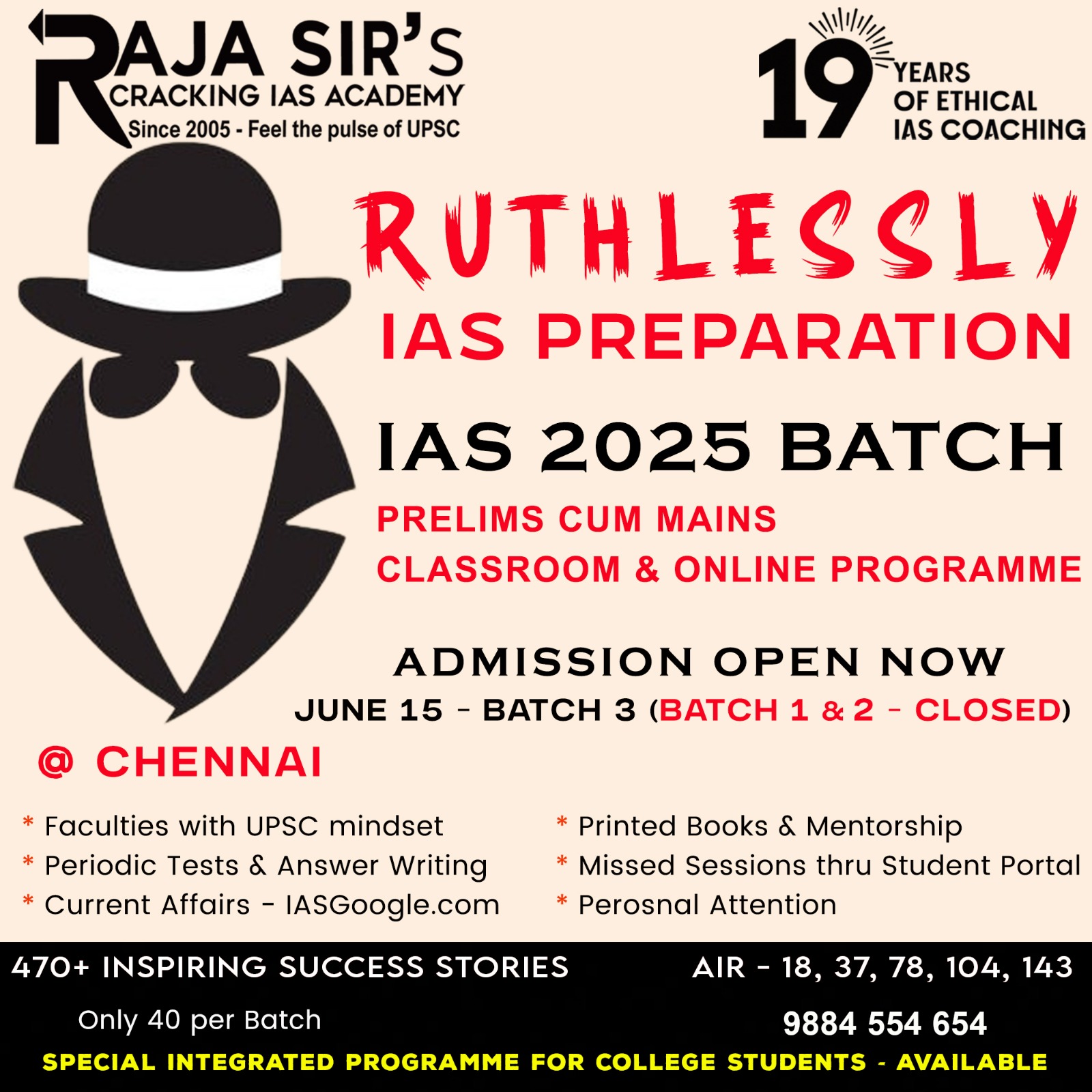
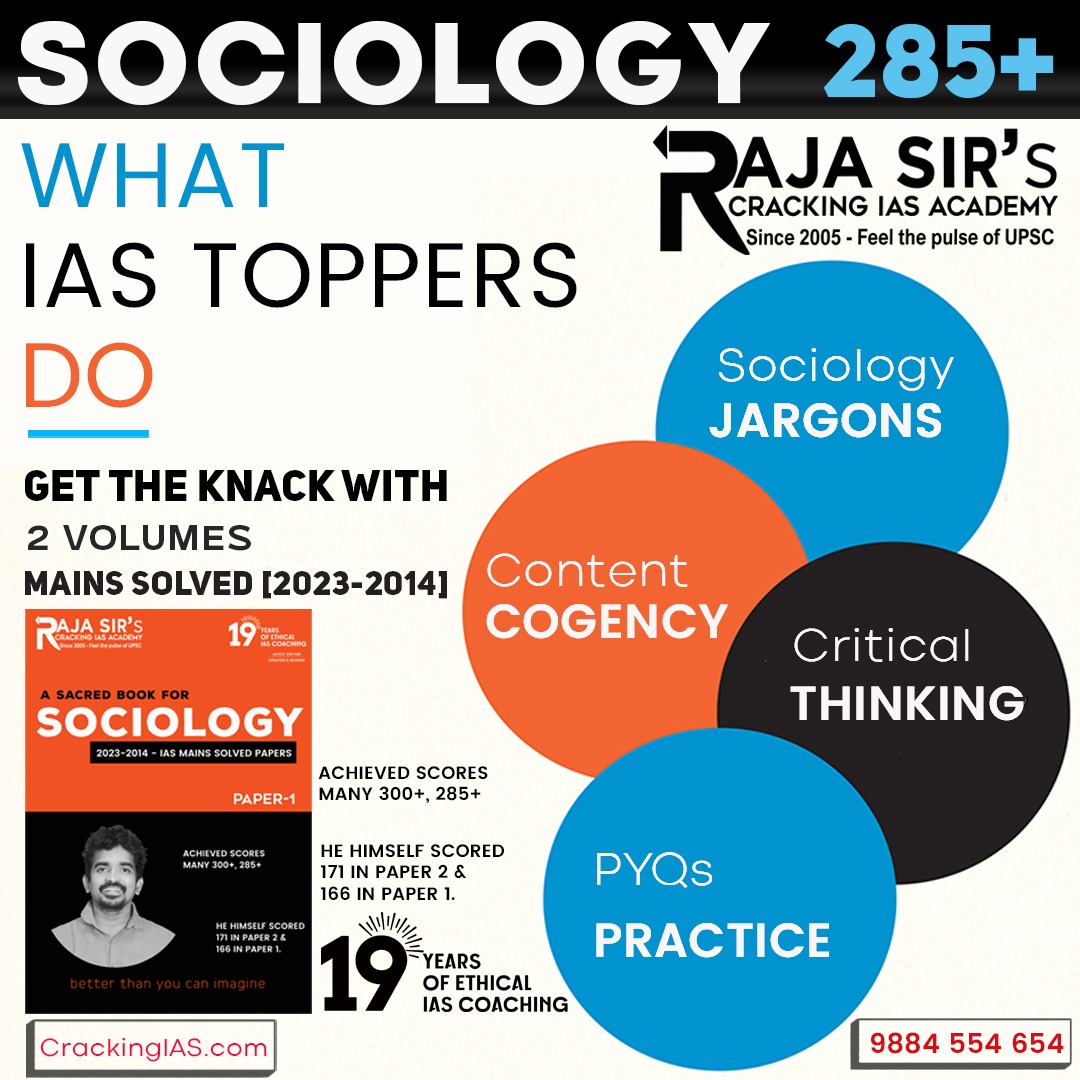
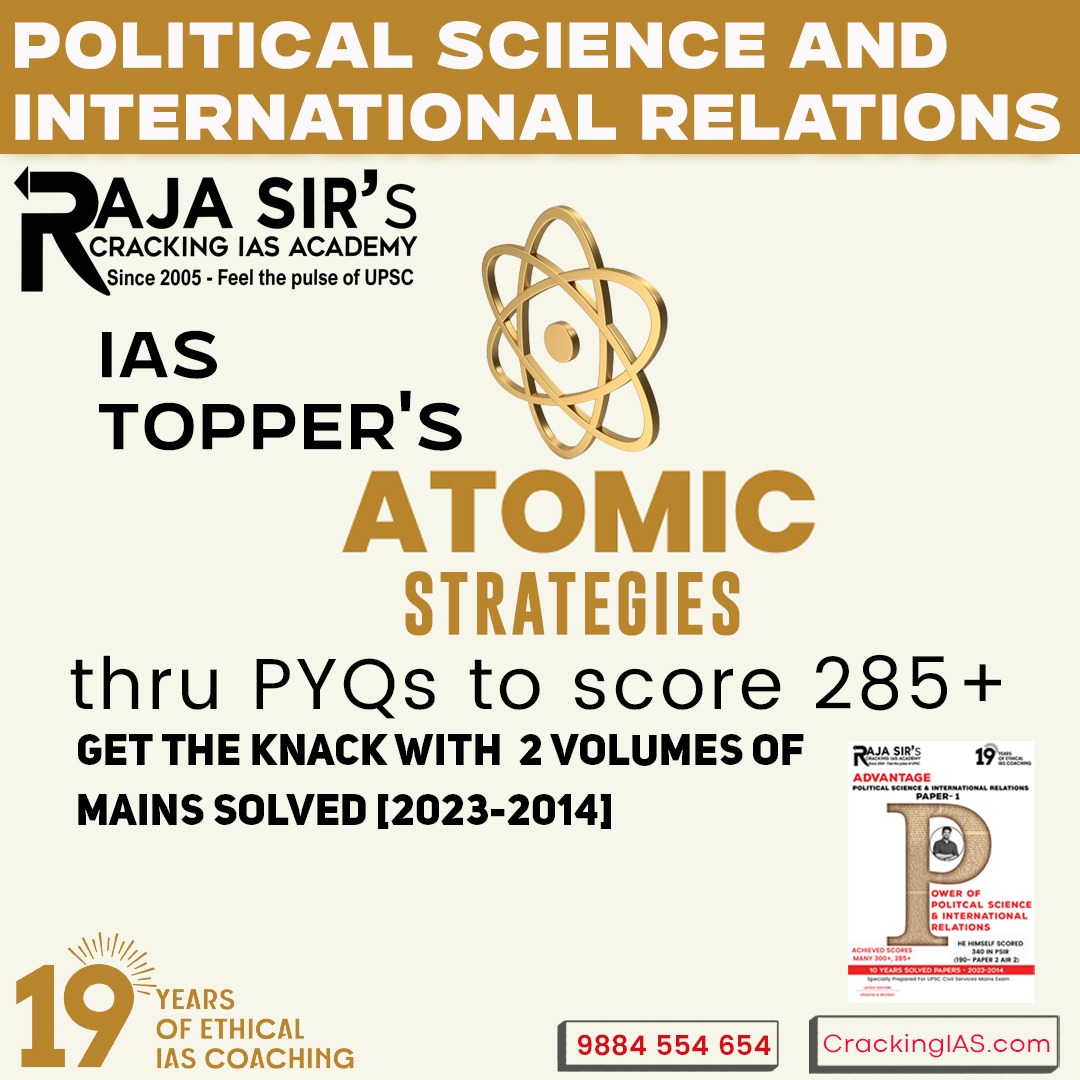
 General Studies
General Studies